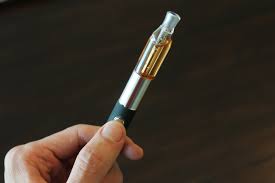Vaping: Yes, It Is Dangerous
Vaping and e-cigarettes have gained popularity over the last several years. They are often thought of as the healthy alternative to smoking, but this concept is far, far from the truth. This misconception has led to the widespread popularity of vaping, especially among teens.
But vaping is associated with an increased risk of nicotine dependence and, recently, has been linked to several deaths. It’s time to stop.
Do we even know what vaping is? According to MPH Online, vaping is when “a device (the vape pen or vape mod) heats a volatile liquid in a cartridge, which the user inhales from the device.”
They go on to explain the ingredients, which include “glycerin, for the clouds of vapor; propylene glycol, for the flavoring to bind to; flavoring, for… well, flavor; and nicotine, which is obtained as a pure, pharmaceutical-grade concentrate.”
It sounds terrible now, but it gets much worse. The Center for Disease Control (CDC) found that “vape juice” may also contain “cancer-causing chemicals, volatile organic compounds, ultrafine particles, flavorings that have been linked to lung disease, and heavy metals such as nickel, tin, and lead.”
Lulled into a belief that their cotton-candy-flavored clouds of vapor are somehow not that bad, many vapers may forget about the vast amounts of nicotine inhaled. The CDC shows that the common Juul device’s refills, or pods, contain the same amount of nicotine as a 20 pack of cigarettes. Nicotine is an addictive chemical that can cause severe damage to blood vessels and the heart.
MPH Online notes that vaping with nicotine “doubles the risk of heart attack over not vaping at all, and (more of a concern) many people who vape to stop smoking actually end up doing both – multiplying their risk of heart attack by five.” The use of nicotine can increase the likelihood of becoming addicted to other drugs like meth or cocaine.
Who is susceptible to the vaping epidemic? An easier question to ask is, who isn’t? Teens have been especially affected by the lure of vaping. According to the CDC, “Data showed that more than 3.6 million U.S. youth, including 1 in 5 high school students and 1 in 20 middle school students, were past-month e-cigarette users.”
Teens are especially vulnerable to the addictive nature of e-cigarettes because their brains are not fully developed. Nicotine use at a young age can lead to long-term harm to brain development.
Manufacturers are targeting the youth demographic with enticing delivery systems, fun flavors, and cute packaging. The industry is producing vaping devices that are discreet and blend in with everyday items found inside a teen’s backpack. Among these clever devices are vape pens made to look like markers, pens, and USB drives. These marketing tactics have led teens to believe that vaping is not harmful, but rather a fun, casual activity that everyone does.
But vaping has recently been associated with several deaths. According to an article by Angelica LaVito on www.CNBC.com, there have been at least three vaping-related deaths and “officials are reviewing 450 possible cases in 33 states and one jurisdiction.” The article goes on to say that these deaths occurred after the users went to the hospital with gradual symptoms of shortness of breath, chest pain, and breathing difficulties. These deaths still have yet to be fully explained.
However, we have known about the debilitating effects of vaping for years. On MPH Online, we see that several vapers have developed “popcorn lung,” or bronchiolitis obliterans, since 2015.
Whether or not popcorn lung and the sudden vaping-associated deaths are related is still unclear. What we do know is that users are being urged to stop.
Although it may seem like no big deal to some, vaping is a huge issue. Vape juice is packed with chemicals and additives that are known to cause harm. They are filled with nicotine, which is addictive and is known to cause heart disease. Every day more people are using and getting addicted to vaping. It is becoming a significant issue with school-aged teenagers.
Most importantly, it can kill. This is not a harmless vapor cloud. So if you or a loved one vape, or smoke, quitting is the best option. You can visit smokefree.gov or call 1-800-QUIT-NOW for help.











